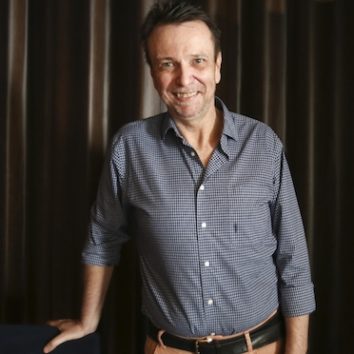
Millennial artists in China
— November 5, 2018Artists featured in a new book by curator Barbara Pollack were all born after Mao Zedong’s death and see the world very differently to their forebears

China’s new generation of millennial artists are globalist in their outlook and unrelentingly positive about their future, says New York-based writer and independent curator Barbara Pollack, who is in Hong Kong to promote her new book, Brand New Art from China: A Generation on the Rise.
“Artists in the US seem very provincial in comparison and seem full of complaints about the art market and how they can’t find a gallery and how collectors are messed up,” says Pollack.
Pollack’s first contact with Chinese artists was in the 1990s, when she was covering contemporary art from around the world. At the time, editors were only interested in whether Chinese art was a flash in the pan similar to what was seen with Russian art.
“All I can say is that at the time Zhang Xiaogang was selling for US$25,000. If I had bought a Zhang Xiaogang back then, I’d be talking to you as a millionaire rather than as a journalist,” says Pollack.
She took her first trip to China in 2004 to visit the Shanghai Biennial, “Techniques of the Visible” and sensed that the art market was about to explode. Since then she has been visiting regularly and in 2010 published her first book on Chinese art, The Wild, Wild East: An American Art Critic’s Adventures in China.
For this latest book, which she began researching in 2013, Pollack wanted to explore what the future might be for Chinese contemporary art. She set out to interview young artists and chose those who had not lived through the Cultural Revolution and were all born post-1976, after the death of Mao Zedong. She found a generation affected by the open-door policy and the new influences coming into China and profoundly affected by the one-child policy.
“Almost all the artists in this book are only children. There is a stereotype of them being spoiled brats, but I found the opposite. Because they were only children, there was an extreme pressure on them to succeed from an early age,” says Pollack.
Unlike the artists who came onto the scene in the 1990s and for whom being Chinese was an important identity, these millennial artists were much more concerned that their work was seen as international.
“Though they were proud of being Chinese, instead of being nationalistic they were globalist and very much a spitting image of global context,” says Pollack.
This translated as wanting to achieve on a global level. While artists who were just starting out in their careers in New York were happy to land an exhibition at a gallery in Brooklyn, these young Chinese artists were aiming for gallery exhibitions all over the world from the outset of their careers.
In her quest to fathom the seismic shift from artists such as Zhang Xiaogang, whose Chinese identity is central to his work, to this new generation of artists, some of whom claimed not to live in China but on the internet, Pollack observed several trends.
One of the key strategies she noticed was “sampling”, where young artists sample different cultures of the world rather than sticking to their own culture. The abstract paintings of Qiu Xiaofei, 41, are a good example of this.
“[Qiu Xiaofei] said to me that he listens to techno music when painting and then feels that he’s sampling from different things he sees on the internet and combines them in his canvas,” says Pollack.
Beijing-based performance artist Chen Tianzhuo, 33, also samples cultures from around the world, mixing Butoh dance, rave culture, acid rock, hip-hop, manga and Tibetan music in his performances, which are all about his search for a new religion. The performers are often nude, and his shows are edgy, which Pollack says sometimes takes Western audiences by surprise.
“They’ll say, ‘You can get away with doing this in China?’ He shows the atmosphere where the young Chinese artists are working where there’s a lot of freedom given to them,” says Pollack.
All the young artists she met were profoundly influenced by the internet and for some it has taken over their whole practice.
Shanghai-based Lu Yang, 34, has created a video game titled Uterus Man, which features an androgynous figure as the hero and all of his superpowers come from the female reproductive organ.
He has an electric umbilical cord that he zaps people with, throws radioactive fetuses and rides around on a jet-powered pelvis.
“Not only is she looking at cultural identity as something fluid, but she is looking at gender identity as if it is totally fluid. She is not just saying that the internet has liberated her from carrying the burden of Chinese identity – it’s eliminated her from having to carry the burden of a female identity,” says Pollack.
Born in 1977, Shanghai-based Xu Zhen only just makes the age cut for Pollack’s post-1976 bracket of artists, but his work encapsulates the energy and ideas of this new wave of Chinese artists. He declared himself CEO of his own corporation, MadeIn, which produces all of his art. One of his most impressive works is Fearless, a huge tapestry filled with references from Western art history.
“[Xu Zhen] said to me, ‘Anybody can be a Chinese artist. All you have to do is take some images of Mao, throw in some dragons and pagodas and you’re a Chinese artist. An American artist can be a Chinese artist. So, I can be whatever kind of artist I want to be.’ It really woke me up,” says Pollack.
Original Link: SCMP









